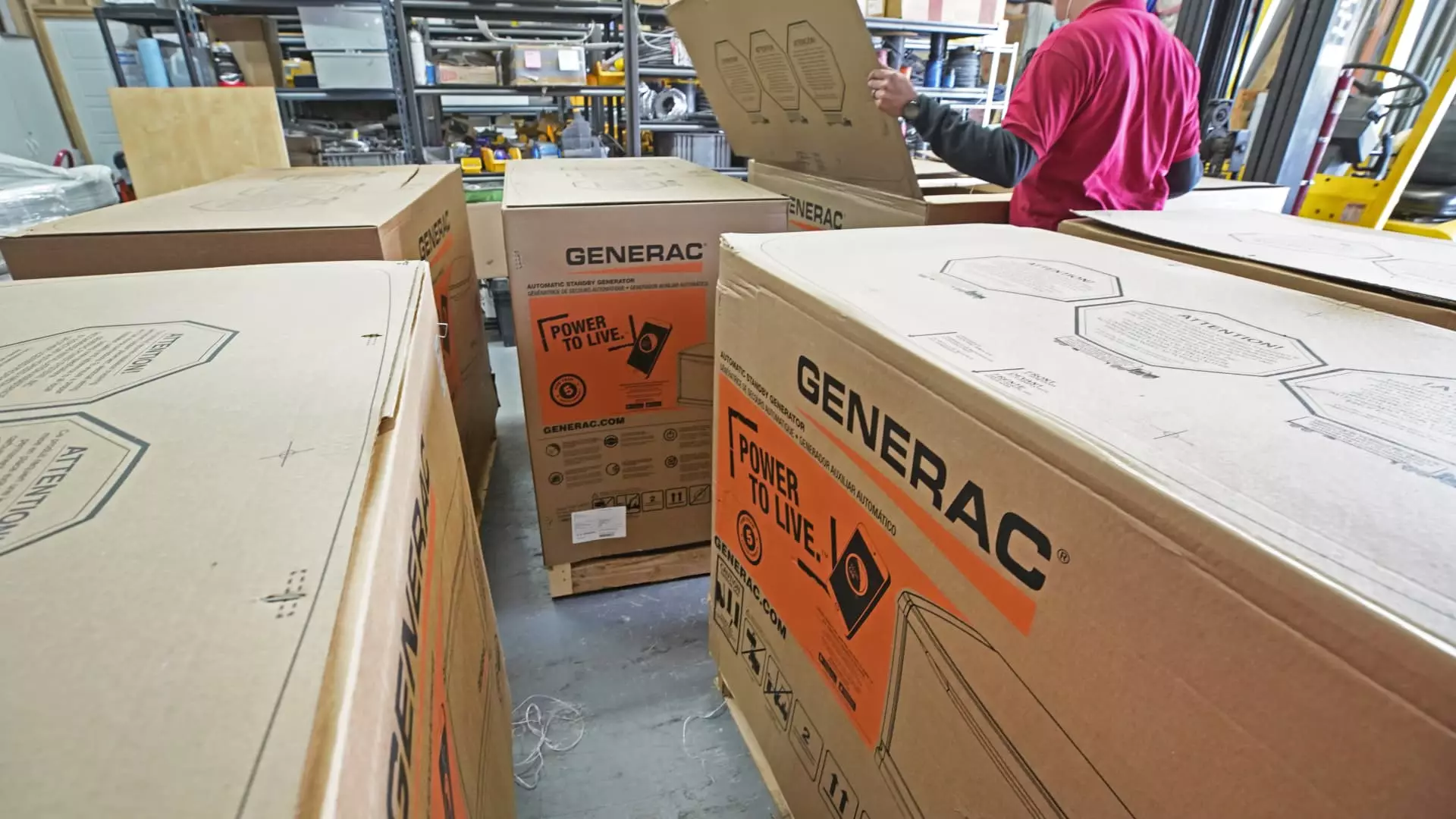In the midst of a blistering heat wave across the United States, investors are looking toward shares of Generac, the backup generator manufacturer that has seen its stock price skyrocket nearly 12% this week alone. As we face the dual specters of an active hurricane season and unprecedented heat, Generac’s successes can partly be attributed to the general public’s growing apprehension about power outages. The oppressive temperatures and looming storm threats have ignited a sense of urgency and vulnerability, propelling consumers to increasingly consider backup power solutions. Whether or not this surge in stock reflects genuine long-term growth or mere opportunism is a question that weighs heavily on the minds of savvy investors.
While the National Weather Service reports that extreme heat warnings affect a staggering 130 million people, it becomes glaringly apparent that this is not merely a seasonal issue. The looming threat of disasters has become a breeding ground for market volatility, and companies like Generac are in prime position to capitalize on these crises. The climate-driven reality compels both consumers and investors to treat weather and energy outages as constant threats. This is a critical transformation in how risk is perceived concerning climate change—one that cannot simply be dismissed as temporary or frivolous.
Climate Change and the Energy Landscape
Amidst these heat waves and storms, the National Oceanic and Atmospheric Administration, with grim accuracy, indicates that this season could witness an above-average number of named storms and hurricanes. Specifically, the agency predicts 13 to 19 storms, with a worrying proportion expected to escalate into major hurricanes. The implications for the aging American power grid are severe and disconcerting. With an anticipated 50% increase in power outages due to a combination of climate change and the strain created by new data centers, the escalation of these risks necessitates a serious reevaluation of our infrastructural priorities.
As CEO Aaron Jagdfeld pointed out in his conversation with CNBC’s Jim Cramer, this isn’t merely a financial performance discussion; it’s a fundamental shift in how we should perceive and manage energy supplies and demands. As the climate crisis worsens, it becomes increasingly essential for investors to recognize that the stock market and environmental health are inexorably linked, that proactive measures—like investing in backup power solutions—become both a financial and moral imperative.
The Broader Implications for Utility Stocks
With backup generation in high demand, it makes sense that utility stocks are also expected to ride the wave of increased power demand. Bank of America analysts forecast significant tailwinds for the electricity sector as energy necessities climb, and while they are selective with their recommendations, it’s indicative of the urgency that surrounds this sector. Companies like Constellation Energy and Vistra are set not just to maintain their positions but potentially thrive in this transforming environment.
Yet, analysis does not stop at mere stock performance; it encourages further inquiry into which companies stand best positioned to deliver sustainable solutions for climate-resilient infrastructures. The likes of Sempra, Northwestern Energy, and Alliant Energy are being heralded by analysts as firms with tremendous potential, offering investors a chance to align financial gain with broader societal benefit. It’s becoming clear that the pathway to profitability is intricately tied to the capacity for these firms to adapt to a changing climate—an insight that offers both a challenge and an opportunity for the center-right investor.
What This Means for Responsible Investing
In our ever-evolving world, informed investment strategies must amalgamate financial acumen with a conscious awareness of climate realities. The current predicament elevates companies that are not merely profitable in times of plenty but are also positioning themselves as leaders in sustainability and crisis readiness. This reality is underscored by the necessity of proactive engagement with energy demands, power reliability, and disaster preparedness.
The stakes are high—both for individual investors and for the broader environmental landscape. As the heat continues to sizzle and storms loom, those on the center-right side of the political spectrum who advocate for robust, market-driven solutions must recognize that their investments can make a significant impact. By supporting companies that take proactive stances against the dual threats of heat and hurricanes, investors have the unique opportunity to foster both economic growth and environmental stewardship. The road ahead may be fraught with challenges, but those challenges also present ripe opportunities for those willing to navigate this new and daunting investing landscape.

